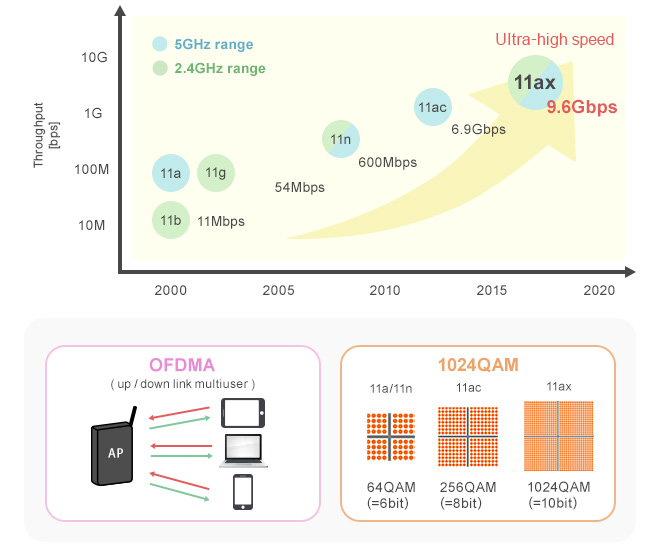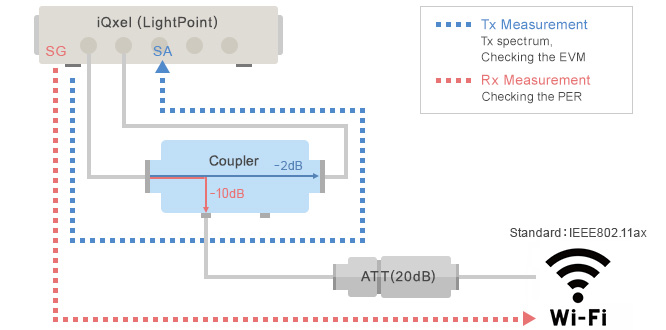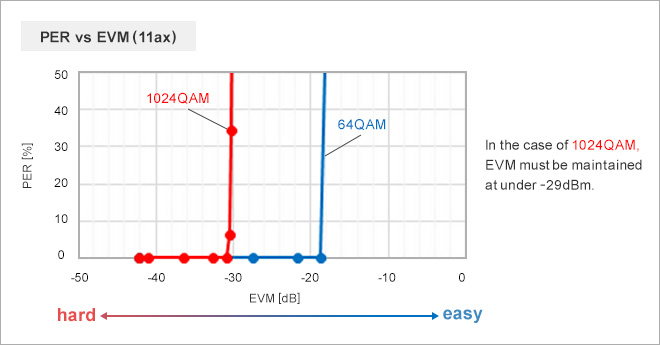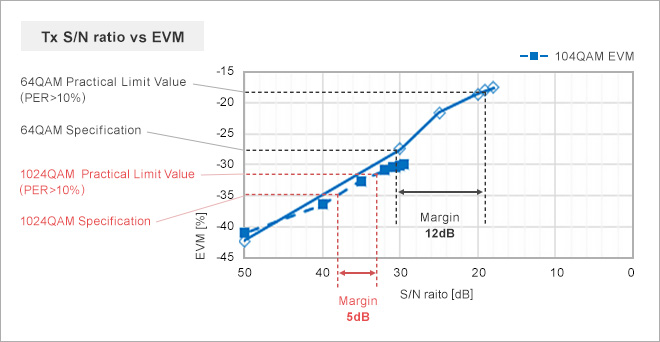Noise suppression technologies/case study introduction (Consumer)
Noise Suppression Measures for Wi-Fi 6 (1)
INDEX
1. Introduction of Wi-Fi 6
The new standard IEEE 802.11ax was established for “Wi-Fi 6”.
Its use is expected for public Wi-Fi in extremely crowded locations, such as stations and airports. Wi-Fi 6 is accessible even in crowded environments due to its enhanced maximum transmission speed through modulation (1024QAM) and orthogonal frequency-division multiple access (OFDMA), a technology that effectively assigns packets to multiple users.
However, modulation (1024QAM) is weak against noise and the importance of noise suppression measures may rise compared to conventional standards.

Changing of Wi-Fi Standards
| Wi-Fi standard name | Maximum communication speed | Frequency | New common name | Year |
|---|---|---|---|---|
| IEEE 802.11a | 54Mbps | 5GHz band | - | 1999 |
| IEEE 802.11b | 11Mbps | 2.4GHz band | - | 1999 |
| IEEE 802.11g | 54Mbps | 2.4GHz band | - | 2005 |
| IEEE 802.11n | 600Mbps | 2.4GHz band 5GHz band |
Wi-Fi 4 | 2010 |
| IEEE 802.11ac | 6.9Gbps | 5GHz band | Wi-Fi 5 | 2015 |
| IEEE 802.11ax | 9.6Gbps | 2.4GHz band 5GHz band |
Wi-Fi 6 | 2020 |
2. Checking the EVM Allowable Value
Noise issues for Wi-Fi 6 may be due to the deterioration of transmission and reception characteristics.
EVM is a parameter which indicates transmission characteristics. It is designed so the EVM stays below -35 dB in terms of standard and it is believed the ambient noise can cause deterioration in EVM value. We perform measurements as shown in the following diagram using a Wi-Fi 6 module to check how much EVM deterioration is acceptable in a 1024QAM communication.

■Measuring Conditions
Output: -20dBm(At SG Port)
Frequency: 5210MHz
Bandwidth: 80MHz
Data Rate: 11ax MCS7/9/11
S/N Ratio: 50~18dB
3. Check Results of the EVM Allowable Value
The following diagram is the measurement result of “PER vs EVM.”
We found that the EVM had to be under -29 dBm if 1024QAM when the standard that meets the communication quality is under 10% PER (packet error rate).

The relationship of S/N ratio between EVM and transmission waveform at this time is indicated in the diagram below.
We have found that communication becomes difficult if the S/N ratio deteriorates by 5 dB for 1024QAM even if the design satisfies EVM -35 dBm, a value that conforms to the standard.
The necessity to implement noise suppression measures increases since the condition is harsher compared to when the required margin was 12 dB in 64QAM.

- Next page:Anticipated Noise Issues and Measures①
